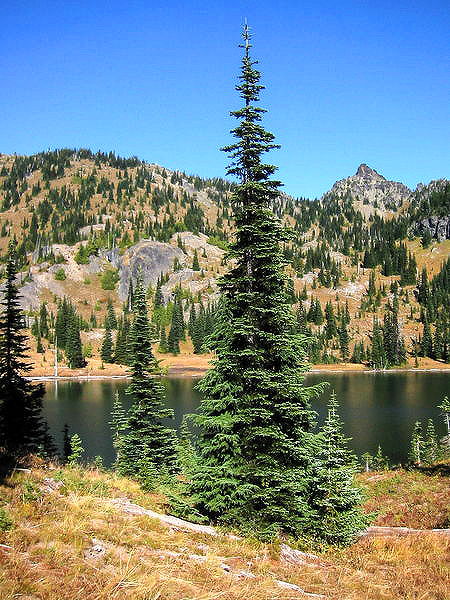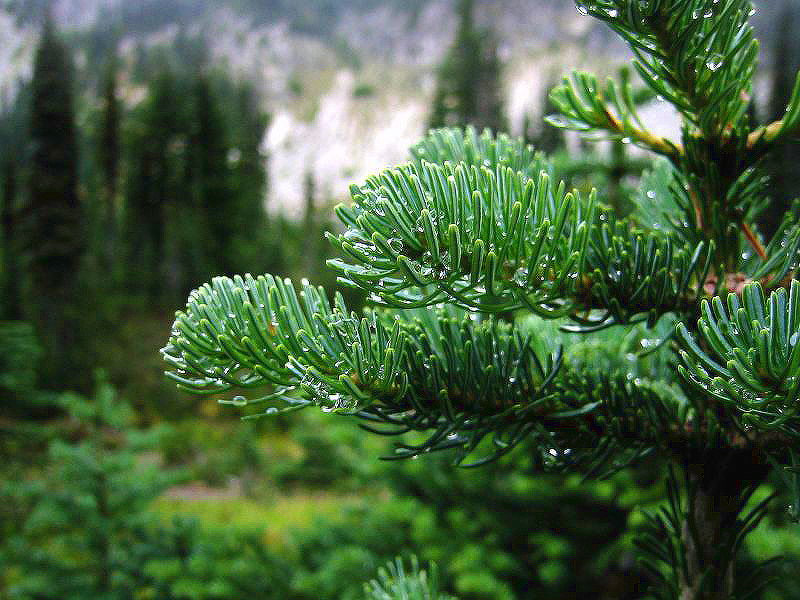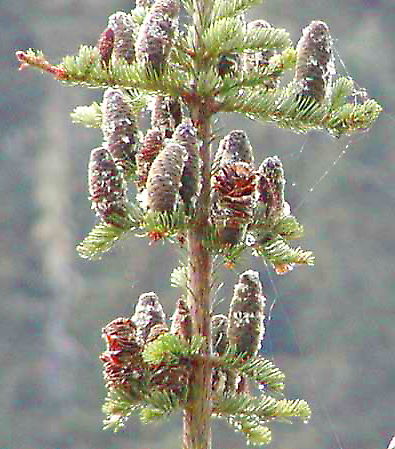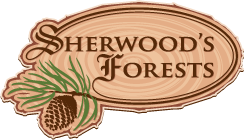Alpine Fir

Note both how narrow the tree is, and how thin the soil is. Tough tree.
Picture credit: Wikipedia
Abies lasiocarpa (Abies bifolia)
Botanists are divided into the clumpers and the spliters. Clumpers put related plants in a single species. Splitters divide them up. Some botanists consider alpine fir in the Rockies as a separate species (A. bifola) from the ones in the coastal mountains.
I saw some on a hike, and they looked so cool, with their narrow outline, and their purple, upright cones looking like short fat candles.
Alpine fir is the New England church steeple of trees. Very narrow for it's height. Makes Colorado spruce look chubby.

Alpine fir needles typically come out of the sides of the twigs, but curve up.

In a good seed year the top of the tree is festooned with cones. Yes, the cones are purple, and fairly tight. They gradually disintegrate on the tree, scattering their seed to the winds.
Last summer I brought in my first batch of alpine fir. Whether it's one species or two, I figured that trees with an inland seed source were more likely to do well in the our dry winters. These trees come from the mountains west of Revelstoke from about 4000 feet above sea level.
When I bring in a new tree, I sprinkle some of them around my own farm to see what they'll do. As I expected the ones in the middle of the prairie don't do well, but few seedlings do. Ones set in places where they received partial shade have done quite well with about a 70% survival rate with no extra care at all.
Alpine fir in it's native habitat grows on very well drained soils -- frequently a thin layer of rocky soil on top of a pile of rocks. In winter it's subject to heavy snowfall, and a short growing season.
Because it tends to jump the gun and break bud early, it can be set back by late frosts. For this reason, I recommend placement so that it doesn't get winter sun -- this will delay bud break, and also to site it outside of low lying frost pockets. Mulch well, especially in a light snowfall year. These trees aren't for everyone. While considering them, you can be looking for the right spot. The key is the well drained bit. Clay soils probably are a bad idea.
They are normally a mountain tree -- think thin rocky very well drain soil. cool summer days, and winters that would make a banker's heart quiver.
Alpine fir tolerates moderate shade. It's a good succession tree to try in a dying poplar stand.
More info:
BC Tree Book Subalpine Fir
USFS Silvics Manual Subalpine Fir
The Gymnosperm Database Abies lasiocarpa
Wikipedia Abies lasiocarpa
Inventory tables are double rows to make them usable on small screens.
Common name and container in column 1.
Count is how many we think we have left. Price is per tree.
Height will be there next year, we hope.
Conifer -- Fir
| Common Name Container |
Count Price |
Height (feet) |
|
| Fir, Alpine #1 Std pot (3 qt) |
35 $22.50 |
||
| Fir, Alpine #5 Std pot (15 qt) |
5 $80.00 |
||
| Last Update: 2024-Jan-21 | |||
Got something to say? Email me: sfinfo@sherwoods-forests.com
Interesting? Share this page.
Want to talk right now? Call me: (8 am to 8 pm only, please) 1-780-848-2548
Do not arrive unannounced. Phone for an appointment. Why? See Contact & Hours That same page gives our hours of operation.
Back to Top
Copyright © 2008 - 2021 S. G. Botsford
Sherwood's Forests is located about 75 km southwest of Edmonton, Alberta. Please refer to the map on our Contact page for directions.
